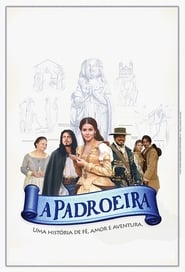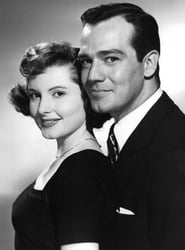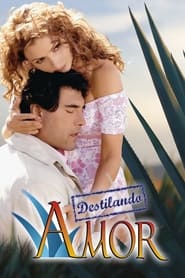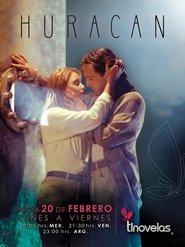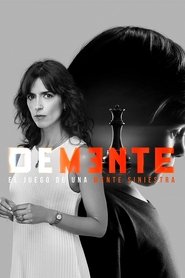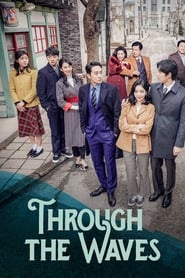Soap TV Series - Page 24
-
Kumkum Bhagya
2014
Kumkum Bhagya
2014
star 3.6Follow the life of Punjabi matriarch Sarla Arora who runs a marriage hall and lives with the hope of seeing her two daughters Pragya and Bulbul who're poles apart, happily married some day. -
Pepper Chocolate
2003
Pepper Chocolate
2003
star 7.9Ana Francisca is a poor and ugly girl who, after being humiliated by the entire town, becomes a beautiful, stylish and rich woman who wants revenge. During this trajectory, this romantic comedy also shows the true love of Ana Francisca and Danilo that survives throughout the years, the distance and the traps of destiny. They will be part of a love triangle with Olga, a snobbish girl who is going to do anything to steal Danilo from Ana Francisca. -
A Padroeira
2001
A Padroeira
2001
star 8A Padroeira was a Brazilian soap opera produced and displayed at the time of 18 hours by Rede Globo, between June 18, 2001 and February 23, 2002, and presented in 215 chapters. It was written by Walcyr Carrasco collaboration with Duca Rachid and directed by Walter Avancini, and had Deborah Secco, Luigi Baricelli, Elizabeth Savalla and Maurício Mattar in leading roles. -
Pantanal
1990
-
Mad Love
1983
-
Burning Hearts
2016
Burning Hearts
2016
star 7.8Tancinha is a charming fruit seller known for her hot temper who gets torn between an explosive relationship with passionate truck driver Apolo, her neighbour and childhood sweetheart, and an irresistible attraction for Beto, a lady-killer who will not take no for an answer. The girl ends up being caught up in a family feud over the disappearance of her father whom she believed to be dead. Tancinha will leave a path of turmoil along her way to unveil this mystery. -
First Love
1954
First Love
1954
star 5First Love is an American soap opera which ran on NBC Daytime from July 5, 1954 to December 30, 1955. The series aired at 4:15 p.m. EST, between Golden Windows and Concerning Miss Marlowe. Although the show had a strong fan following, at the time NBC had little use for developing any of their daytime shows and canceled First Love after a year and a half. Many cast members such as Patricia Barry, Val Dufour and Rosemary Prinz went on to become long-running daytime stars. Created by Adrian Samish and written by Manya Starr, the series centered around jet engineer Zach James and his difficult marriage to Laurie James. Due to being neglected as a child, Zach was obsessed with building a name for himself. Laurie tried to understand him but was unable to help him deal with his problems, as he went on trial for the murder of an aviatrix he may have been having an affair with. The show became known chiefly for a major blooper early in its run. A Friday cliffhanger involved Zach seeing his friend Chris crash his plane. Za -
O Casarão
1976
-
Real:Time:Love
2020
Real:Time:Love
2020
star 6.3After ten years of being best friends, it has been six months that they have become an honest and confident couple. But because of a mistake, they started a secret relationship? A web sitcom about the real love of nineteen-year-old students. -
Quinceañera
1987
Quinceañera
1987
star 7Quinceañera, is a Mexican telenovela, produced by and broadcast on Televisa in 1987, starring Adela Noriega and Thalía. Quinceañera was the first telenovela to talk about substance abuse, date rape and gangs, and is considered to be the first telenovela made for teenagers. Quinceañera was named by the Associated Press as one of the ten most influential telenovelas ever to air in Latin America, and Univision tlnovelas viewers named it one of their all-time favorite Mexican telenovelas. In 2010, Quinceañera was placed #7 on the People en Español's "20 Best Telenovelas" list, and in 2012, Terra named it as one of the fifty best telenovelas of all-time. -
Tricky Business
2012
Tricky Business
2012
star 5Isabel Vilela is about to fulfill one of her greatest wishes. She’s been married for a year with the cheerful Danilo when she realizes that she’s pregnant on the eve of a romantic trip. Isabel’s professional life is also booming, with financial help from Danilo, she’s about to inaugurate her own architecture firm -
Distilling Love
2007
Distilling Love
2007
star 7.6Destilando Amor is a 2007 Mexican telenovela produced by Televisa and Nicandro Díaz. It stars Angélica Rivera and Eduardo Yáñez as the main protagonists and was set primarily in Tequila, Jalisco. It is a remake of the 1994 Colombian telenovela Café, con aroma de mujer, and was nominated for twelve Premios TVyNovelas of which it won ten including Best Telenovela of the Year. -
Hurricane
1997
Hurricane
1997
star 5.5Huracán is a Mexican telenovela shown in Mexico from October 13, 1997 to March 27, 1998, starring with the late Jorge Russek, Fernando Balzaretti, and Eduardo Palomo. -
Demente
2021
Demente
2021
star 7.7Teresa Betancourt and Joaquín Acevedo will experience the worst tragedy of their lives: the kidnapping of their son Mateo. From that moment, the intentions of their entire family group will be revealed. Because in the game of a sinister mind... anyone can be the culprit. -
Cara e Coragem
2022
-
Wena profe
2017
Wena profe
2017
star 2When the musical career of a failed upper-class musician, ends up collapsing, he decides to fool the rigid director of a school in Santiago, assuring that he is a teacher who seeks job. He will demonstrate to a group of young people that more important than to be successful, is to do things with passion. -
Through the Waves
2018
Through the Waves
2018
star 4.7Due to the Korean war, Oh Bok-Sil’s family becomes separated lose everything. Not to be defeated, they live with strength as they suffer great hardships. -
Boogie Oogie
2014
Boogie Oogie
2014
star 7.8In the swing of the 70s, two women fight for the love of the same man without knowing their fates were already intertwined. -
Nina
1977
Nina
1977
-
The Marked Heart
2022
The Marked Heart
2022
star 7.7A man hell-bent on exacting revenge on the organ trafficking organization that murdered his wife becomes involved with the woman who received her heart.


